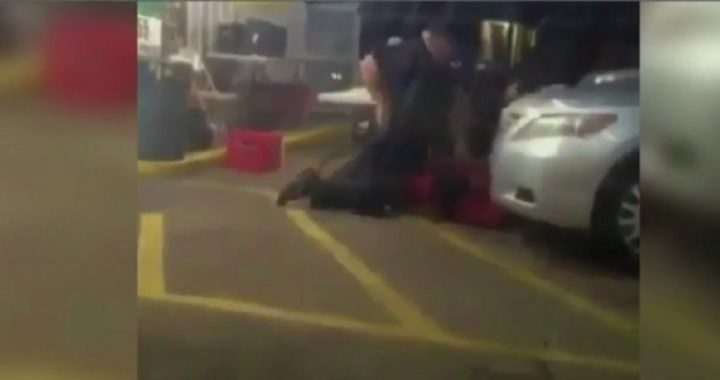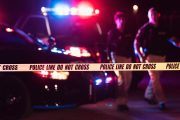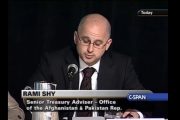
A massacre of five Dallas police officers occurred after a Dallas protest against two officers in other parts of the country who shot black men. A Dallas shooter indicated that he was angry at police abuse of blacks and that he wanted to kill whites.
After the two unrelated police shootings on Tuesday and Wednesday, many people in both public office and the mainstream media were quick to pass judgment on not only the officers involved, but also on the entire system of independent police departments across the country. Both shootings — happening 1,200 miles and almost two days apart — involved armed black men and white police officers.
Before the dust could settle and the facts could be known, the court of public opinion — fueled by public statements and social media — was already decided and the indictment was handed down: Racist cops overreacted and killed two men simply because they were black. But is that really the case?
It all began in Baton Rouge, Louisiana, about 12:35 a.m. Tuesday, when a homeless man called 911 and said a man outside a convenience store threatened him with a gun. When police arrived, they identified Alton Sterling, 37, as the man who brandished a firearm. In an ensuing altercation (shown), Sterling resisted arrest and fought with the officers who used a Taser in an attempt to subdue him. He continued to fight even when the officers had him pinned on the ground.
On the two smartphone videos of the incident, which have gone viral on the Internet, one officer can be heard shouting “He’s got a gun! Gun!” Both officers drew their weapons at that point and told Sterling not to move. He continued to fight (from the angle of the videos, it is hard to say whether he was reaching for his pocket where his gun was) and one officer fired three rounds. Both officers were thrown off Sterling, and it appears Sterling rolled onto his side. Three more shots were fired, and when the officers got up, one removed a gun from Sterling’s right front pocket.
In an age of smartphones and on-the-scene, at-the-moment videos, the perception is that those videos tell the whole story. That is not the case. Even the best of the two available videos of the Baton Rouge shooting is grainy and is shot from an angle where Sterling’s right arm is blocked from view by one of the officers. Moreover, once the shooting begins, the camera moves and does not show Sterling during the time in which the next volley of shots is fired.
This writer has been in more physical altercations than he would be pleased to admit and can say without hesitation, that when one is in close physical contact with an opponent, motions — such as reaching for a pocket — can be felt even if they cannot be seen by those watching the altercation.
As Art Thompson, CEO of The John Birch Society, observed:
Videos showing alleged crimes of the police do not show what happened prior to the beginning of the video and may not show all that happened during the video (either because it is offscreen or because the camera angle did not capture it), and even what is captured by the camera may not be noticeable without zooming in and/or watching it in slow motion. Let us not rush to judgment.
But “rush to judgment” is exactly what the mainstream media, social media activists, and some elected officials have done. Almost immediately, Obama’s Department of Justice stepped in and launched its own civil rights investigation.
While the turbulence of that shooting was beginning to build, police in Falcon Heights, Minnesota, stopped a black motorist, Philando Castile, 32, for a broken taillight. The officers asked for his license. According to a statement given by his girlfriend, Diamond Reynolds, who was in the car with him, as he reached for his wallet, Castile told the officers, “I have a firearm on me.” The officers ordered him not to move and drew their weapons. He continued to reach for his wallet, which was near the gun. The officer on the driver’s side shot Castile four times. Castile died a short time later.
Reynolds said in her statement that the officer yelled, “Don’t move! Don’t move!” She asks, “But how can you not move when you are asked for your license and registration?” She said she was yelling, “He’s licensed to carry!” as all of this was happening, but the officer shot anyway.
She and others have called this a “murder” and said that it was racially motivated. In fact, before the details could be sorted out, Minnesota Governor Mark Dayton — who is requesting a federal investigation — made a statement indicating that the shooting would not have happened if Castile had been white. “Would this have happened if the passengers were white? I don’t think it would have,” Dayton said, adding, “All of us in Minnesota are forced to confront that this kind of racism exists.”
Though Castile’s case would on the surface, at least, seem to be one of officer malfeasance, because the initial facts indicate that Castile was trying to do the right thing and didn’t pose a danger to the officers, again a rush to judgment should not be made, and an investigation should be allowed to run its course.
In the immediate aftermath of a tragedy, such as these shootings, it is impossible to know whether race played a part. It would make just as much sense to deduce that, in the Castile shooting, the officer had bought into Democrat fears of private ownership of guns, and panicked, shooting him because he was a gun owner. If, however, the investigations bear out racism, that needs to be addressed departmentally and legally. What can be known for certain — in both of these shootings — is that failure to obey the lawful order of police officers in dangerous situations led to an escalation and the deaths of two men.
In the case of Sterling, he fought the officers while armed and resisting arrest. When the officers pointed their weapons at him and ordered him to be still, he refused to comply.
In the case of Castile, this writer has some experience. I have, from time to time, carried a firearm. I have been stopped by police while carrying. I have always rolled my window down, placed my hands on the steering wheel, and informed the officer that I was armed. I then sat calmly and asked, “Officer, what would you like me to do?” Sometimes, they have said, “Nothing. I just need to see your license and registration.” Other times they have asked me where the weapon is. Sometimes they have asked me to step out of the vehicle while they secured the weapon. I have always complied. I have done so because I recognize that surprising a police officer with the presence of a gun raises the danger in any situation.
As tragic as his death is — and whether or not race played any part in the officer’s actions (which we cannot know) — if Castile had followed that protocol, he would probably be alive today. Retired Sergeant John Slater of the Henrico County Police Department in Virginia, agrees.
Slater told The New American, “You don’t mix furtive actions with weapons. By reaching for his wallet which was near the gun after the officer ordered him not to move, he raised the stakes. The order to get his license out was followed by an order not to move. Compliance with the officer’s last order is always the best action.” Slater added that he is all for officers being “constrained by the Constitution — which is as it should be” and that if the officer oversteps those boundaries, “the time and place to sort that out is later, with a judge, when the situation is not volatile.” Slater, who was involved in a shooting years ago, said that after his shooting, he had many occasions where he stopped motorists who informed him that they were armed and who kept their hands where he could see them. All of those situations ended without anyone getting hurt.
That being said, an officer should not be allowed to shoot someone merely because he has a perception of possible danger, but only when he concludes from what he observes that he is in imminent danger. In most states, if a citizen shot someone for merely having a gun next to him, that citizen would soon be on trial for murder. Should an officer be held to lesser standards? Again, though, this should be sorted out in an investigation to determine whether the officer involved followed the law and department policy.
Aside from all of the attempts at mind-reading to determine what — if any — part racism played in these shootings, the fact is that these are local cases and should be investigated either locally or by the states involved. Investigations at the federal level — whether requested or not — only serve to create a “solution” which is worse than the problem. America does not need federal control over local police any more than it needs a rush to judgment.




